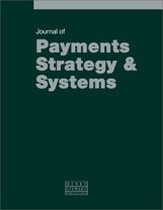Payments from a cooperative bank’s perspective: SEPA and beyond
Abstract
The cooperative banks in Europe serve more than 215 million customers and process a significant part of all European payment transactions. As a central bank for German cooperative banks, DZ BANK’s annual payments volume exceeds 4.5 billion transactions. With this significant portion of the whole European payment volume, DZ BANK can be considered as a representative sample of developments in European payments — from the experience of the SEPA migration to the present state of play and to future developments. According to DZ BANK’s data, the SEPA migration followed exponential behaviour until the planned end date in February 2014. The hesitant migration can be understood as an indication of an incongruity between long-term social benefits and short-term advantages perceived by the clients. But the European market integration provided the tangible advantage, for example, for German cooperative banks to bundle transaction processing volumes, and they achieved a highly efficient operating model with two-steps of economies of scale on national and pan-European levels. The SEPA schemes fit the model of a payments ecosystem and can be described as a ‘multi-sided business platform’, facilitating the payment flow between consumers and merchants or employers. This description provides a chance to compare this standardised and interoperable platform (also known as SCT and SDD) with other types of business platforms, which facilitate interaction between consumers and retailers similarly. For the future, predictions forecast a tripartition of the European payments industry revenues in the three segments of standardised payment formats, cards payments and ‘alternative payment methods’ (the latter with the highest growth rates). Payments are reaching a crossroads as to whether a ‘way beyond SEPA’ can be based on the existing model or whether payments in the future will require new forms of coexistence and partnership models with vertical or horizontal integration. In a market-driven development of payments, cooperative banks have multiple opportunities — from mobile front-end apps to back-end joint ventures and potential partnership with new dedicated clearing platforms — as long as they continue to combine local client intimacy (‘local knowledge’) and added value (‘services tailored to clients’ needs’) with efficient operating models according to the principle of subsidiarity.
The full article is available to subscribers to the journal.
Author's Biography
Gregor Roth is an Executive Officer and Global Head of Operations/Services, the transaction banking business segment at DZ BANK, Germany. He has been with DZ BANK and predecessor banks for more than 25 years and has held various management positions. He serves as Deputy Chairman of the supervisory board at Equens SE, the leading European payments and cards processor, Chairman of the supervisory board at ReiseBank AG and as a member of the supervisory boards of Deutsche WertpapierService Bank AG.
Udo Milkau is Head of Strategy and Market Development for the business line transaction banking at DZ BANK. He received his PhD at Goethe University, Frankfurt, and worked as a research scientist at major European research centres, including CERN, CEA de Saclay, and GSI. He is also a part-time lecturer at Goethe University Frankfurt, where he delivers courses in transaction banking, and is a member of the Payments Services Working Group of the European Association of Co-operative Banks (EACB) in Brussels and of the Operation Managers Contract Group of the European Central Bank (ECB).
